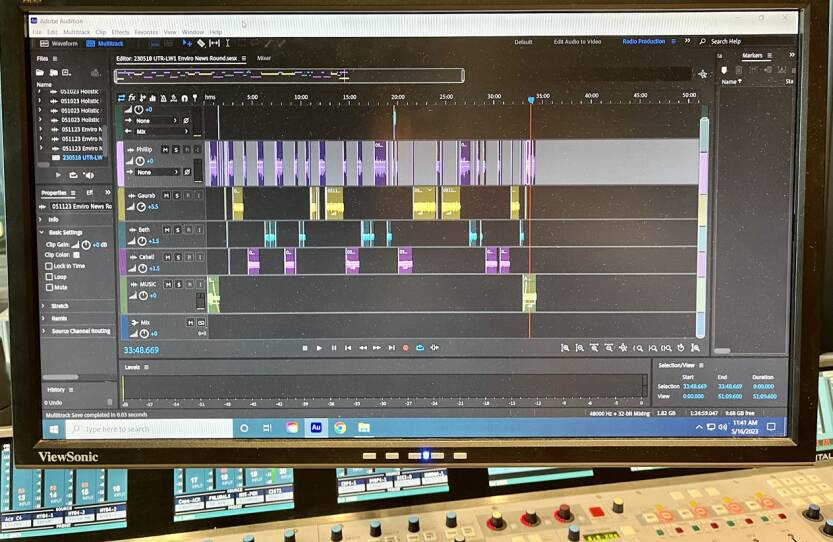For any theater production, the spotlight shines on the performers on stage. Yet, the real magic is cast by the crew behind the curtain. As for radio, we are familiar with the voices that bring new stories to the airwaves each day. Let’s journey behind the microphone and into the soundbooth with David Goodman, a production engineer and producer for GBH News.
Goodman engineers the award winning GBH radio program Under the Radar with Callie Crossley and mixes audio for features stories on GBH’s Morning Edition and All Things Considered. The art of sound engineering is part recording and part mixing audio, drawing on such disparate skills as hardware management and problem-solving.
“Audio production is theater for the mind,” says Goodman, “Audio is the most intimate form of media – you cannot touch or see it.”
In the control room and on the monitor is Goodman’s canvas, Adobe Audition, a digital audio workstation (DAW) for editing and mixing audio tracks. In this software, different clips and tracks can be color-coded to organize the multiple recordings. With a palette of sound, Goodman crafts and mixes the audio to create a seamless storyline for the listener. On the screen, the colored coded tracks - like paint - weave with each other in this portrait of sound.

“I see myself as a chef who takes the various ingredients and mixes them together,” Goodman explains. “When the reporter writes a script, that’s the recipe. I take those recordings - or ingredients - and mix them together to serve the listeners.”
In addition to weaving together a story, sound engineers process audio within individual recordings. “The pandemic taught us that there is bad sound quality from doing online video interviews compared to speaking with a professional microphone,” Goodman reflects.
Using the tools available through Adobe Audition, Goodman cleans up the muddiness in recordings through equalization (EQ), a process of adjusting the volume of different frequencies within an audio signal. For instance, Goodman was working on a news story about goatscaping, but the reporter’s voice was recorded on a windy farm. Using EQ, Goodman erased the background noise with what is called a high pass filter that omits the frequencies of the wind, which are mostly low frequencies.
After Goodman finishes his sound mixing, he sends the audio to the producers and reporters. “I get to work with some of the most talented people in the business,” Goodman shares, “I especially enjoy working with the reporters, and they’ll respond to a mix that I’ve done with an ‘oh wow!’ Yeah, it never gets old when they respond in a really positive way.”
While Goodman welcomes the feedback of his colleagues, his main objective is to connect with the listener. Because people are often listening in their cars with many distractions, Goodman strives to ensure that reporter voices are heard and understood even in the middle of traffic.
“Public radio has a reputation for having the best quality sound,” explains Goodman, “My goal is to uphold public media’s legacy and craft audio into a story.”
Listen to Under the Radar with Callie Crossley here.





